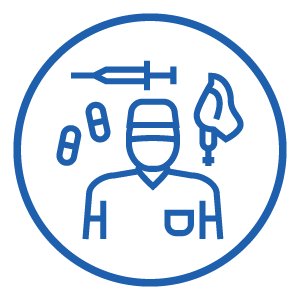 Anesthesiologists
Anesthesiologists
Building a good 'marriage' with hospitals: A primer for ASCs
A global pandemic did not stop the proliferation of joint ventures between ambulatory surgery centers (ASCs) and hospitals in 2020. The trend continues in 2021, as federal regulators expand on the types of procedures that can be performed in the ambulatory setting. Hospitals are recognizing the need for a surgery…
FDA: Class I recall of Alaris Infusion Pump Module 8100
Editor's Note The Food and Drug Administration, on April 30, identified the recall of the Alaris Infusion Pump Module 8100 as Class I, the most serious. The Pacific Medical Group (DBA Avante Health Solutions) is recalling the infusion pump because the front bezel components may crack or separate, leading to…
US anesthesiologists’ burnout rate, risk factors
Editor's Note The prevalence of burnout in anesthesiologists is high, and workplace factors are a big influence, finds this study led by researchers at Boston Children’s Hospital and Harvard Medical School. Of 3,898 respondents to a survey of American Society of Anesthesiologists members: 59.2% had a high risk of burnout…
Logistics, clinical outcomes associated with converting ORs into an ICU for COVID-19 patients
Editor's Note This study by researchers from the department of anesthesiology, Columbia University Irving Medical Center, and the department of perioperative services-nursing, New York-Presbyterian Hospital, both in New York City, describes how OR and anesthesia personnel converted 23 ORs into an 82-bed operating room intensive care unit (ORICU), ensured staff…
Collaborative anesthesia providers can help boost OR performance
Most high-performing ORs share something in common—an anesthesia group that is actively engaged in perioperative leadership, takes responsibility for organizational performance, and is fully invested in the success of the OR. Unfortunately, in many ORs, anesthesia providers focus narrowly on services and procedures, not the total performance of the surgery…
Sexist, racial/ethnic microaggressions against surgeons, anesthesiologists
Editor's Note The findings of this study from the Southern California Permanente Medical Group, Irvine, suggest that there is a high prevalence of microaggressions that stigmatize female and racial/ethnic-minority surgeons and anesthesiologists and contribute to unhealthy surgical workplaces and physician burnout. Of 588 (259 female, 329 male) respondents to a…
Strong new tactics to support COVID-19 financial recovery
The end of the COVID-19 pandemic is in sight, but hospital surgery departments will not likely see a rapid return to normal. Since the start of the pandemic, perioperative leaders have had to stay flexible and act quickly. Over the next 12 months, OR leaders will need to reassess the…
Study shows increased telemedicine use early in the COVID-19 pandemic
Editor's Note This study by researchers from Harvard Medical School, Boston, on data from 16.7 million insured individuals, shows that 30.1% of total outpatient visits early in the COVID-19 pandemic (March 18-June 16, 2020) were conducted via telemedicine, and weekly telemedicine visits were 23 times higher, compared with the pre-COVID-19…
Effects of COVID-19 pandemic on pediatric anesthesiologists
Editor's Note This survey of members of the Society for Pediatric Anesthesia finds that COVID-19 has affected the personal and professional lives of pediatric anesthesiologists, with women and non-whites disproportionately affected. Of 561 respondents: 21.7% planned to change their clinical responsibilities, and 10.6% planned to decrease their professional working time…
Parsing COVID-19 transmission routes informs levels of protection needed
Information about COVID-19 transmission and treatment has evolved between the time this infectious disease first emerged and now. As evidence-based knowledge grows and protocols change, and as populations are vaccinated to develop herd immunity, there is increasing optimism about the ability to combat the virus. Meanwhile, it is important to…

 Free Daily News
Free Daily News